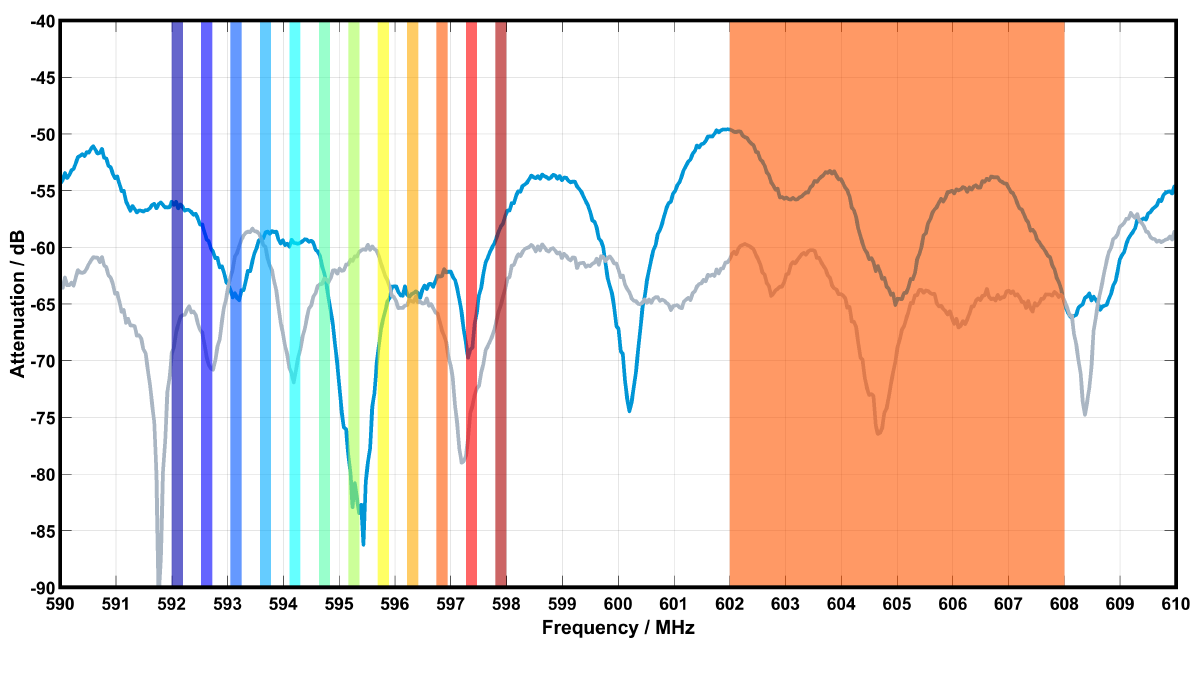In March of this year, Sennheiser released news about their upcoming vision for the future of wireless audio, presenting the concept of the Wireless Multi-Channel Audio System (WMAS). It’s primarily aimed at applications that require a lot of channels in the air, such as theater productions, large sporting events, major tours and broadcast.
Right now we’re living in a world of one receiver-one transmitter rule (for microphones), where RF channels use 200 kHz of RF space, there is little to no bi-directional communication between the devices, and coordination of all those frequencies is becoming mission impossible for events on the largest scale (consider the Super Bowl, Broadway theatres, etc.), where coordination demands a lot of planning, measurements, personnel, time and money. WMAS promises to eliminate most of these issues by providing a single rack unit device that can process 64 channels of audio over and combine a microphone, an in-ear monitor signal and bidirectional communication into one broadband RF channel.
The project started as research on how to combat RF fading, the natural signal loss on stages. RF fading can cause signal dropouts, and is usually dealt with by means of careful antenna placement and diversity, where two antennas are deployed and the system decides which signal is stronger. Until now, this was the only way to deal with RF signal reflections that can, just like in audio, cause cancellation of the signal and compromise the integrity of the RF transmission.
In addition, the amount of transmitting power grew with the use of multiple systems. If one system transmits at 50mW, and there are a large number of systems in one location, then the power on air gets a massive increase that can cause intermodulation issues for surrounding devices.
Combo Deal
So how does Sennheiser propose to tackle all of these problems? WMAS is a bidirectional system-based device where multiple on-air units are combined into a single system that transmits on one broadband channel. Instead of 200 kHz, it’s using 6 or 8 MHz, which is the bandwidth of a single TV channel.
As stated in the company’s press release, “the audio engineer simply selects a carrier frequency for the broadband RF channel to be configured, and the system will coordinate itself, with the quality and range that the engineer chooses for the individual audio devices.” So not only will there be minimal need for frequency coordination, but the system also provides the ability to define allocation of spectrum resources for each channel individually. The lead singer will have the best audio definition and lowest latency setting, while a crew guitar tech can maybe get away with lower audio definition and slight latency increase for their IEMs.
All of these channels will be multiplexed onto a single, broader RF carrier operating with just 50 mW of power. This means that there is going to be less transmitting power in the air and an increased ability of reusing channels for larger outdoor festivals. This is great news for Broadway where theaters that currently disrupt the RF spectrum of a neighboring venue can have their wireless footprint reduced, resulting in less need for frequency coordination between venues.
Until now, we had to use separate frequency ranges for microphones and IEM systems to achieve best results. With WMAS, not only do the systems reside in the same TV channel, they coexist in the same beltpack unit. Since WMAS is bidirectional, Sennheiser is designing a transceiver unit that performers can use for microphone and IEM systems in the same pack.
The feature I’m really excited about is the dynamic resource allocation. Since all devices in the system talk to each other through remote control and communication, it will be possible to create “scenes” for your resources.
Imagine a festival where one band is playing and the other is setting up. The resources go to the performing band while the units of the artist setting up can be discovered by the system and just confirm that they’re turned on and provide a battery check status. When it’s time for a changeover, the operator can simply swap the allocated resources, giving priority to the new band on stage.
Another really important factor is the omission of the diversity system. All of the bidirectional transmission and communication will be done with a single antenna because the broadband transmission channel is much less susceptible to signal dropouts.
Looking To The Future
It must be noted that the actual devices are still in development and technical specifications are subject to change until the official release, which I suspect will happen either by the end of this year or in the next year. Sennheiser is currently advocating with the U.S. Federal Communications Commission (FCC) to clear the use of broadband transmission for these devices, but since this change has already happened in many of the countries in Europe and Asia, I don’t think the FCC wants its users to be left behind.
This new technology promises to drastically change the way the RF world will look in the future. Instead of racks and racks of gear, it provides a compact approach that saves truck space, weight and time for the operator to set this up. I don’t see it being adopted on smaller-scale productions in the beginning, and the new technology will have to coexist with the one-to-one systems for quite some time. But I’m excited to see and hear how the Sennheiser digital IEM systems will sound and how they will tackle the demands that touring life brings, such as the need for redundancy of units.
If you’re based in the the U.S., I encourage you to check in with your local Sennheiser dealer to see if you can provide a letter of support of the changes to the RF transmission rules that the FCC has yet to approve.















